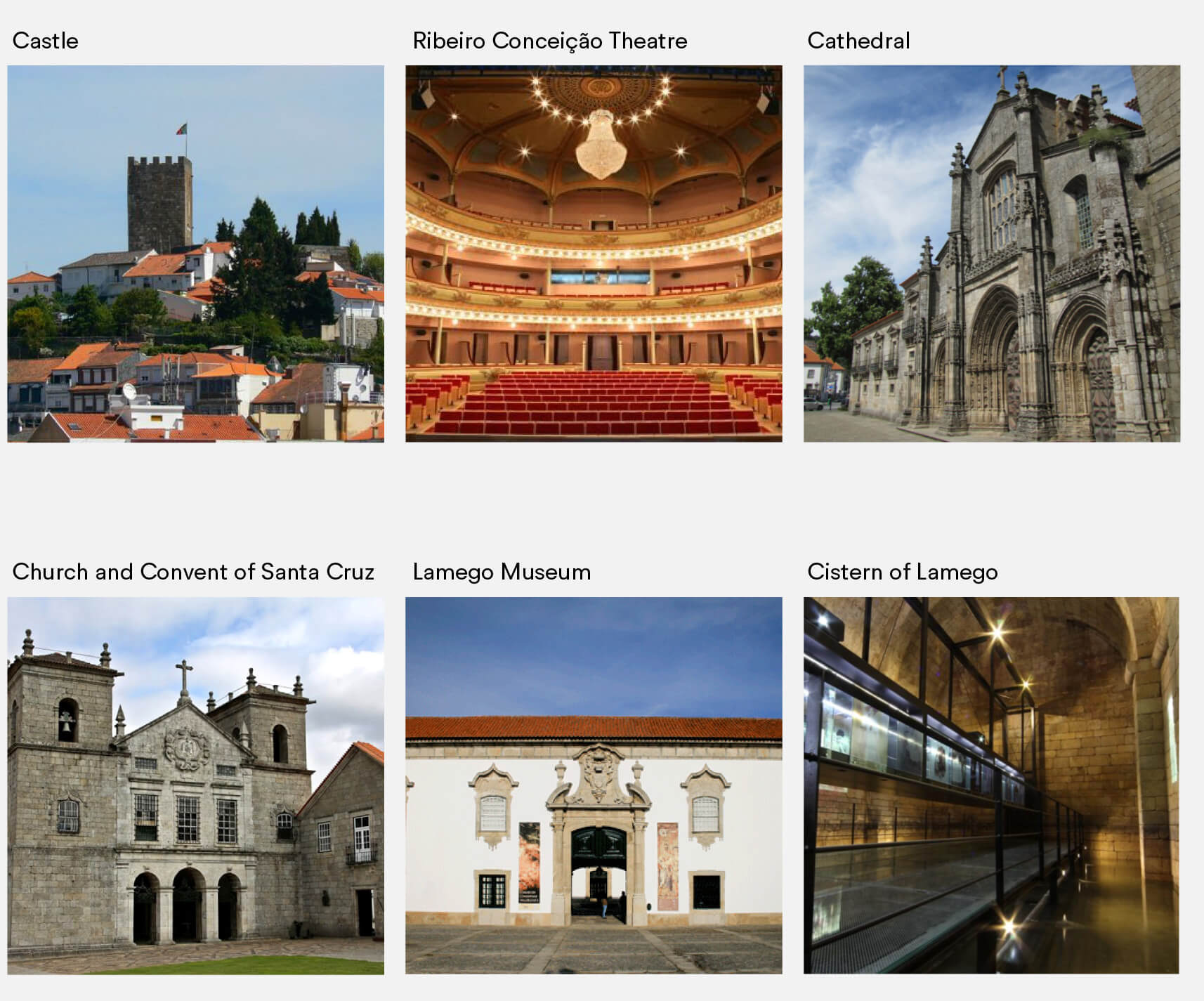The city of LAMEGO
Economy:
Services, some trade and agriculture are the main activities of the municipality. Agriculture represents an important source of wealth, largely due the wine sector, since the municipality, as are the other counties in the region, is part of the Douro Demarcated Region. Along with the production of Port wine, there is a clear focus on the production of table wines with Denomination of Controlled Origin (DOC) and of sparkling wines that have become an important national and international promotional poster.
Historical Origin:
Even though there is no historical certainty, we have been led to believe that there was, in this exact territory, a small settlement (a hillfort) around the 5th century B.C. that would become Lamego.
Until the Roman colonization, many peoples settled around here: Iberians, Lusitanians, etc. It was under Roman rule that its agricultural products, and especially its wines, became famous in the whole Empire. After the Arab invasion (3rd century), that deeply marked the region, the city was historically shaken by a succession (over 4 centuries – 7th through 11th Century) of conquests by Christians and Arabs (the city was definitively recovered from the Moors in the 11th century).
Historical Heritage and Local Cuisine
Places worth visiting:
Castle of Lamego
Cathedral
Chapel of S. Pedro de Balsemãol
Chapel of Nossa Senhora da Esperança
Chapel of Nossa Senhora dos Meninos do Bairro da Ponte
Chapel of the Espírito Santo (Holy Ghost)
Church and Convent of Santa Cruz
Church of Graça
Church of S. Francisco
Church of Santa Maria Almacave
Church of the Convent of Santo António de Ferreirim
Church of the Desterro
Church of the Monastery of the Chagas
Cistern of Lamego
Lamego Museum
Ribeiro Conceição Theatre
Sanctuary of Nossa Senhora dos Remédios
